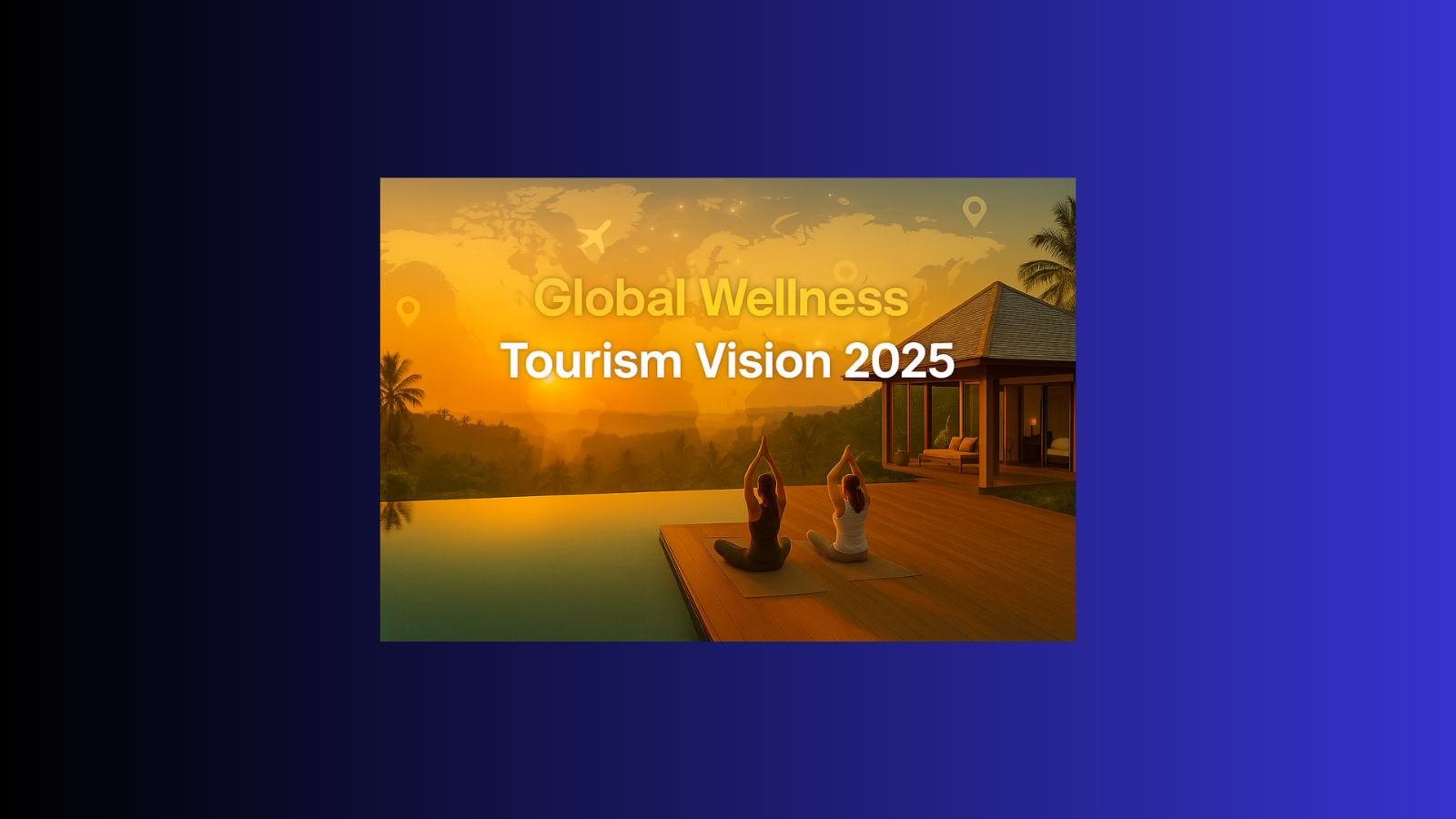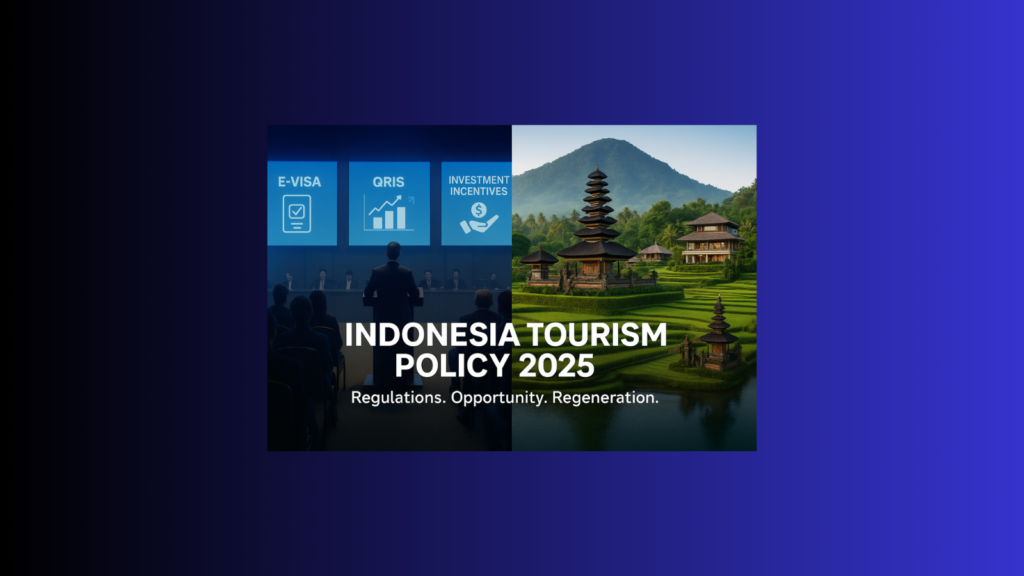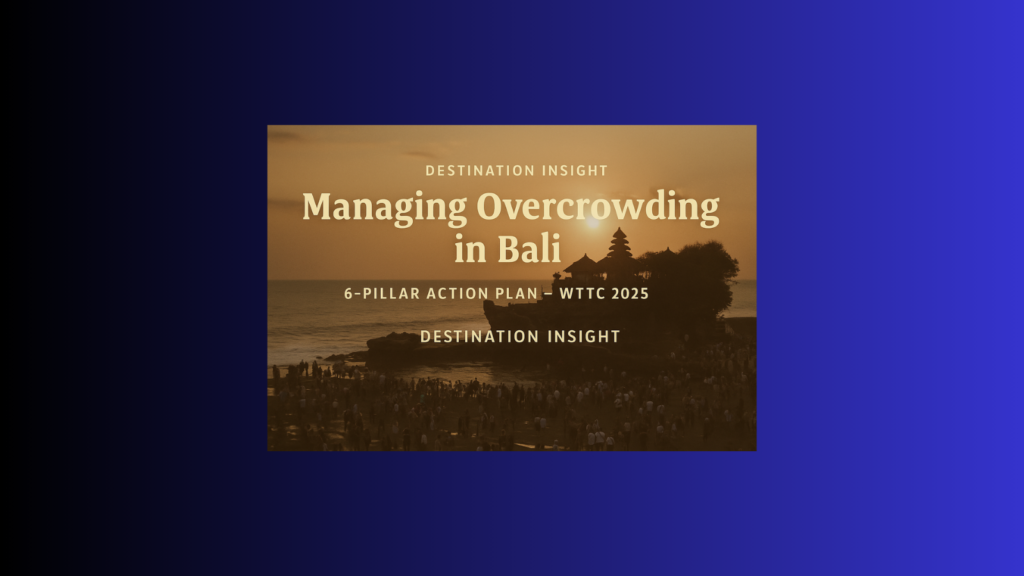Introduction – The Future of Wellness Tourism 2025
The future of wellness tourism 2025 is more than a travel trend — it’s a global movement reshaping the hospitality industry. From advanced longevity clinics to culturally immersive retreats, the market is on track to reach USD 1.3 trillion by 2025 (Global Wellness Institute).
This surge isn’t driven by travelers chasing souvenirs — it’s driven by people seeking transformation, restoration, and authenticity. They want journeys that heal the body, renew the mind, and connect them with something deeper.
As destinations adapt, Bali has become a global case study for blending sustainability, cultural heritage, and innovation into a premium wellness offering that attracts the world’s most discerning travelers.
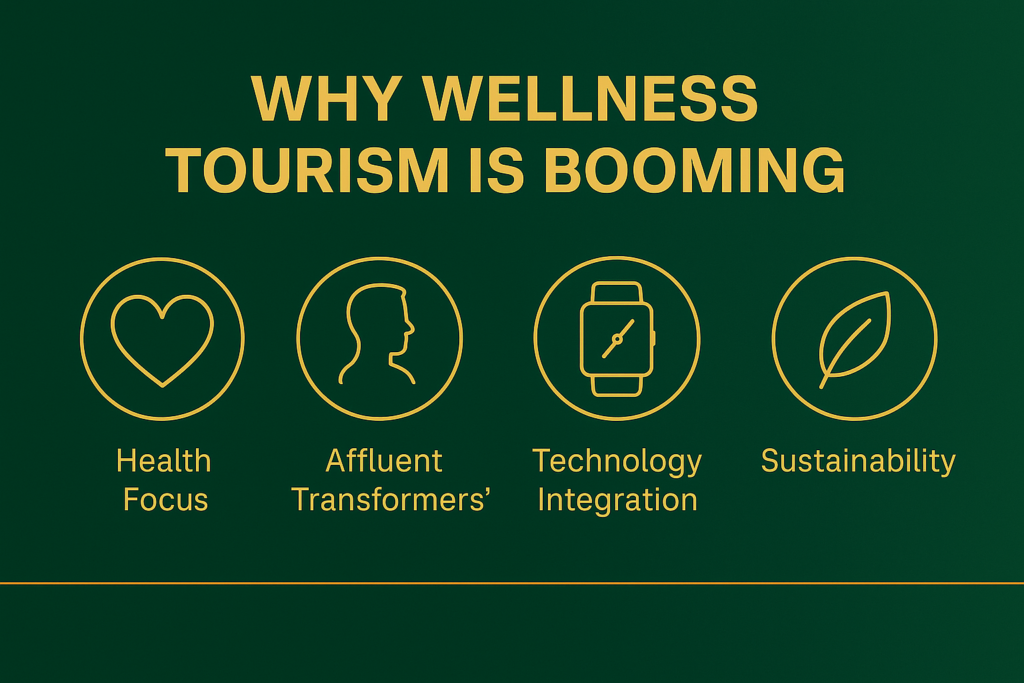
Global Growth Drivers in the Future of Wellness Tourism 2025
The post-pandemic travel mindset has fundamentally shifted. Wellness is no longer an “add-on” — it’s the reason people travel. Four key forces are shaping this rise:
- Post-Pandemic Health Priorities
Travelers now place mental, physical, and emotional well-being at the center of their vacation choices. - Rise of the Affluent “Transformers”
High-spend travelers seek life-changing experiences rather than material luxury. They are willing to pay premium rates for authenticity, transformation, and expert-led programs. - Technology Integration
AI health coaches, biometric wearables, and personalized recovery plans are now seamlessly embedded into travel itineraries — a trend explored in our insights on Digital Transformation in Bali Tourism. - Sustainability as a Standard
76% of global travelers prefer eco-conscious accommodations (Booking.com 2025 Sustainable Travel Report) — a finding also reflected in our Lombok Tourism Growth Strategy.
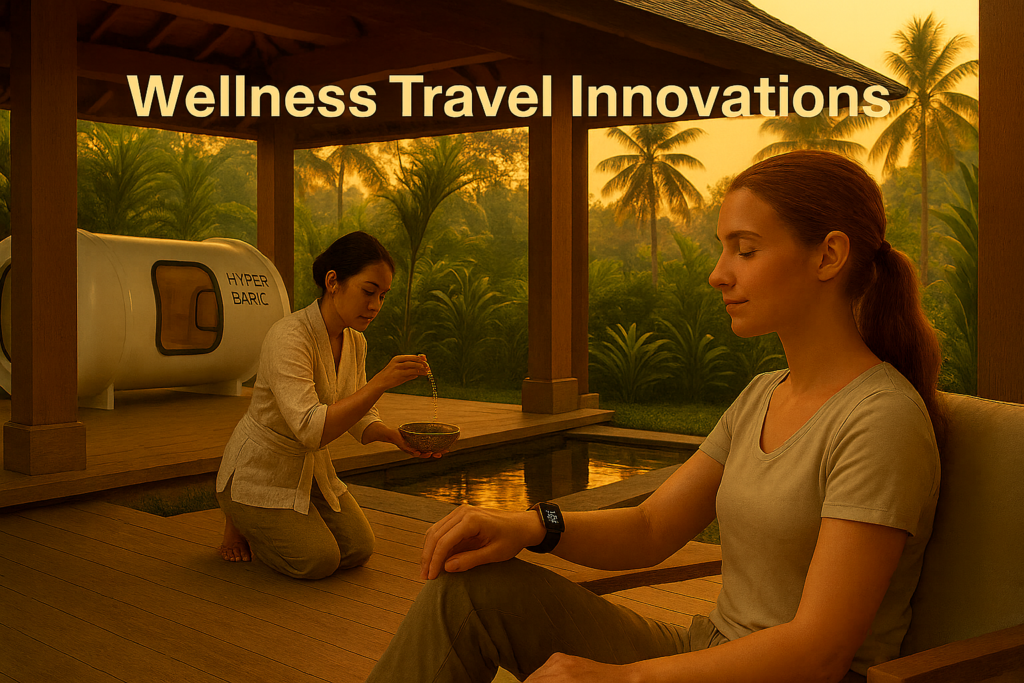
Emerging Trends Defining the Future of Wellness Tourism 2025
1. Longevity & Biohacking Retreats
Destination clinics offering DNA-based nutrition, hyperbaric oxygen therapy, cryotherapy, and advanced medical screenings are becoming anchor attractions in the future of wellness tourism 2025. (Longevity Technology).
2. Digital Wellness & Personalized Journeys
AI-driven itineraries adjust in real time to guest biometrics — from heart rate variability to sleep cycles.
3. Nature Immersion & Eco-Healing
Regenerative travel experiences such as forest bathing, reef restoration, and on-site permaculture farms (Regenerative Travel) reconnect guests with the earth.
4. Cultural & Spiritual Integration
Travelers are seeking authentic, locally rooted traditions:
- Ayurveda in India
- Shamanic healing in Peru
- Balinese water blessings in Ubud
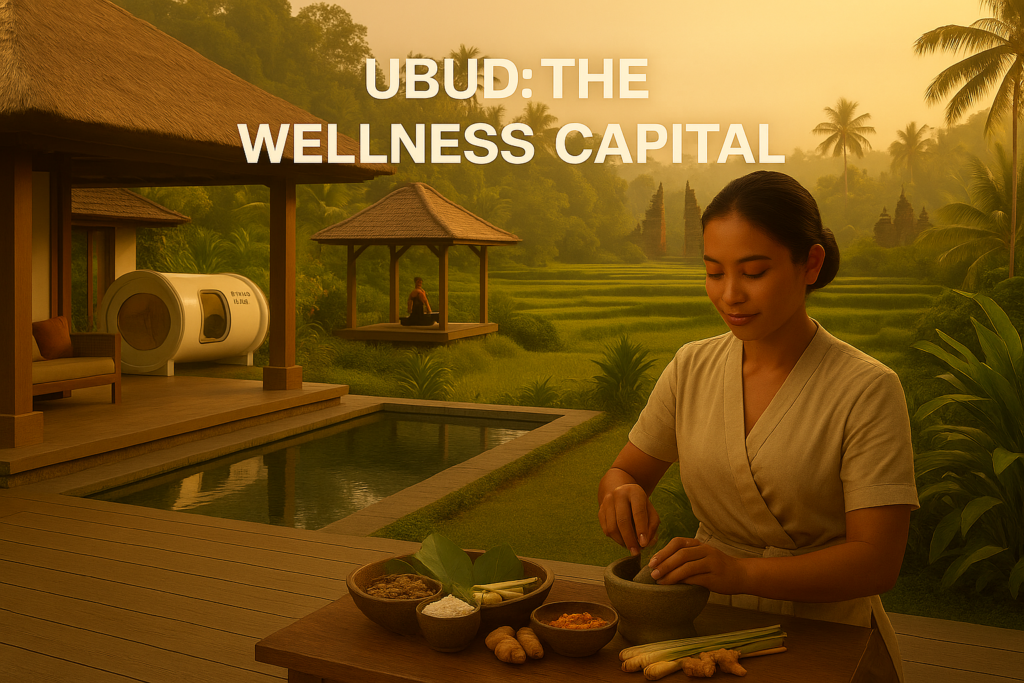
Bali – A Global Case Study in the Future of Wellness Tourism 2025
Bali is now considered the benchmark for premium wellness destinations — blending ancient traditions with forward-thinking innovation.
- Ubud: The Wellness Capital of Asia
Known for its yoga retreats, detox programs, and plant-based culinary scene. - Integration of Modern Health Science
Luxury resorts now combine medical wellness programs with spa therapies — offering both prevention and rejuvenation. - Sustainability Leadership
From single-use plastic bans to eco-villa developments, Bali’s green credentials are more than marketing — they’re policy-backed. - Cultural Authenticity
Experiences rooted in Balinese Hindu traditions, temple ceremonies, and community-led wellness.
📌 This success mirrors strategies we’ve covered in Digital Transformation in Bali Tourism and Lombok Tourism Growth Strategy — proving that cultural heritage and tech innovation can co-exist.
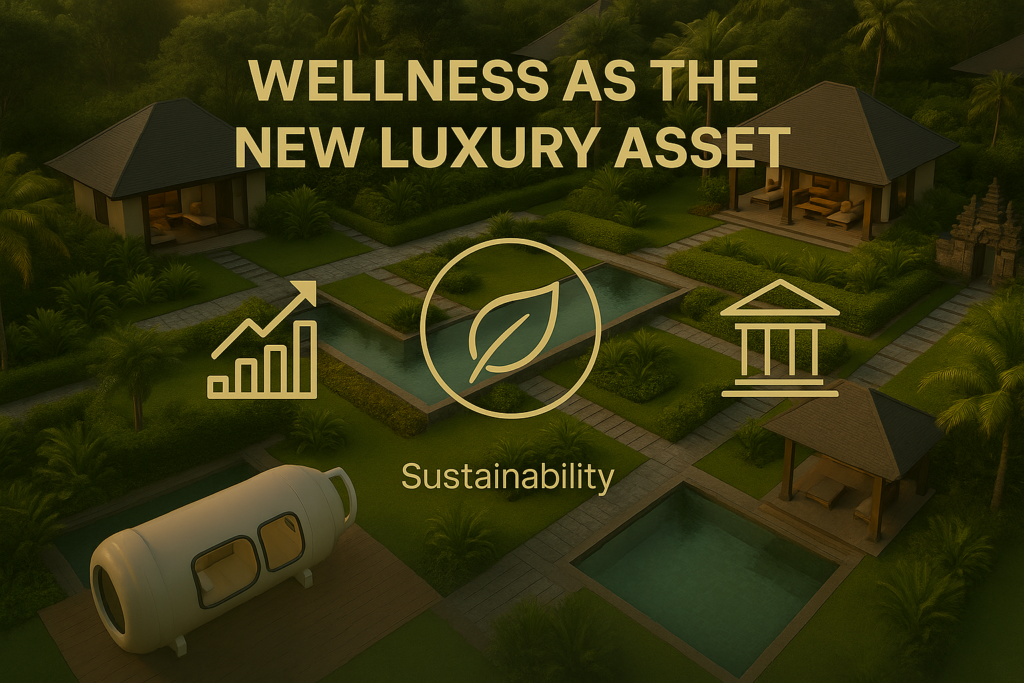
Investor & Operator Opportunities in the Future of Wellness Tourism 2025
With the global wellness economy growing nearly twice as fast as overall tourism, the opportunity is immediate and substantial.
1. Resort & Retreat Development in the Future of Wellness Tourism 2025
Wellness resorts in high-demand markets are a cornerstone of the future of wellness tourism 2025, enjoying ADR uplifts of 25–40% compared to conventional luxury resorts. Long-stay guests (10–21 days) can generate 2–3x the per-guest revenue of leisure travelers (STR Global).
2. Destination Branding
Emerging regions can be positioned as wellness hubs, attracting high-value travelers while avoiding mass tourism’s pitfalls.
3. Cross-Sector Partnerships
Collaborations between medical providers, hospitality brands, and cultural leaders can create destination-defining experiences.
4. ESG-Aligned Investments
Projects that meet sustainability, cultural preservation, and profitability benchmarks are favored by global funds and luxury operators.
💡 Bali Case Study Insight: Resorts with integrated wellness offerings have reported occupancy increases of 12–18% year-round post-implementation — reducing seasonality risk and boosting investor ROI.
Conclusion – From Niche to Mainstream
The future of wellness tourism 2025 marks the shift of wellness from niche to a central pillar of global travel. Bali’s approach — rooted in nature, culture, and innovation — is a blueprint for other destinations.
For investors, operators, and tourism boards, the call is clear:
Wellness isn’t a passing trend.
It’s the foundation for the next decade of sustainable, profitable travel.
📩 Partner with Zenith Hospitality Global — We specialize in developing profitable, ESG-compliant wellness tourism projects across Bali, Indonesia, and Southeast Asia. From feasibility studies to operational excellence, we turn vision into market-leading destinations.
➡ Connect with us on LinkedIn for a personalized strategy consultation.
Looking for expert hospitality management services in Bali? Partner with Zenith Hospitality Global and elevate your property to 5-star standards.
Email: hello@zenith-hospitality.com
Phone: +62 821 4480 7110
Website: https://zenith-hospitality.com/

